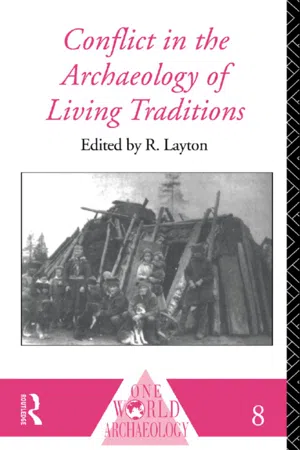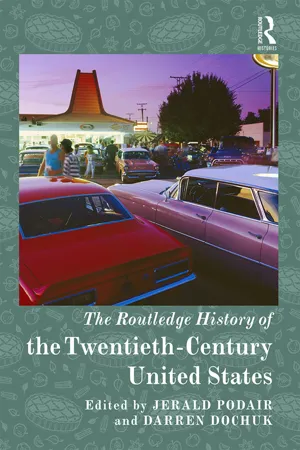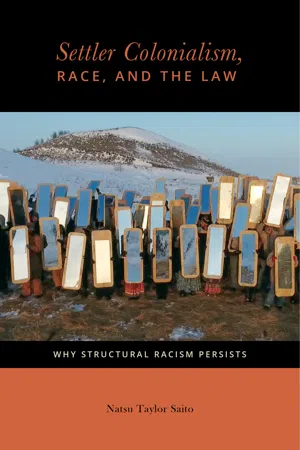History
Native American Labor
Native American labor refers to the work and contributions of indigenous peoples in North America prior to and after European colonization. Historically, Native Americans engaged in a wide range of labor activities, including farming, hunting, fishing, and crafting. Their labor was essential to the economic and cultural development of their communities, and their contributions continue to be recognized and celebrated today.
Written by Perlego with AI-assistance
Related key terms
Related key terms
1 of 4
Related key terms
1 of 3
4 Key excerpts on "Native American Labor"
- eBook - ePub
- R. Layton(Author)
- 2005(Publication Date)
- Routledge(Publisher)
The most telling contradiction of this system lay in the intensity with which the beaver population was exploited to drive these relationships. By mid-century, the system no longer generated the volume of beaver hides produced in earlier years (Moloney 1931). As the beaver trade began to wind down, the relationships of the English colonies to their sponsoring trading companies were redefined or terminated altogether. The colonies reoriented their economies by instituting an agrarian market system and by directing their mercantile economy to the triangular trade with Africa and the West Indies. The institution of an agrarian market economy transformed the relations of production between colonists and Natives, and further alienated Natives from the products of their labour, and from the land itself. As the colonies expanded their agricultural activities, they consequently interfered with the remaining Native subsistence activities (Thomas 1976). Competition for agricultural land became problematic. The clearing of new agricultural fields altered the productivity of hunting territories, cattle grazing diminished the supply of grasses used for the manufacture of straw matting and thatch, and also frequently damaged Native agricultural fields which were generally not fenced. The creation of mill dams adversely affected the distribution of fish in the rivers and streams of the hinterlands. Hence, economic systems which had interlocked at the peak of the fur trade now became at odds when the fur trade was no longer feasible.In response to these alienating forces, Native populations were faced with a number of unsatisfactory alternatives, including participation in the agricultural market economy, craft production for the market, and wage labour. In some outlying locations, Native groups developed an eclectic strategy which combined some of these options with planting, hunting, and fishing. Some individuals opted for relocation in the missionary ‘praying towns’ of central Massachusetts. The diversity of strategies pursued by individual members of corporate Native groups in the region is evidence that at this point notions of ‘tribal’ affiliation virtually lost their meaning altogether.Interdigitated modes: the northern Connecticut River Valley
Although the articulation of modes of production in southern New England can be viewed as a developmental sequence, it is also possible to observe all three stages in simultaneous operation. Thomas (1981) has presented data from the northern Connecticut River Valley which can be used to illustrate the simultaneous operation of relations of dependence, mutually profitable trade, and the alienation of Natives in the face of a developing agrarian economy. - No longer available |Learn more
- Jerald Podair, Darren Dochuk(Authors)
- 2018(Publication Date)
- Routledge(Publisher)
Yet it ignores many other aspects of Native lives, including those that affected their more immediate and personal experiences. Scholars are just beginning to investigate topics about work, family and identity, for instance. How did Indian people support themselves economically during the twentieth century? Where did they find jobs and what changes did they make to obtain them? How did they balance economic survival with their desire to maintain personal and cultural ties to reservations and tribes? How did tribes reconcile development of reservation mineral and other natural resources with environmental concerns and spiritual connections to the land? What long-term consequences did poverty have on family life? And given the increased engagement with the modern world, capitalism, urban life and increased intermarriage with people of other tribes or non-Indians, what have been the consequences for Indians’ culture and identity? Who is Indian? Is it possible to be a Native American in a capitalist culture—an issue Alexandra Harmon’s Rich Indians examined? Does ancestry or culture define a person’s Native identity? And how do tribal cultures and traditions survive in the twenty-first century? The answers are complicated and still unfolding. Yet some patterns are clear. As noted above, allotment’s disastrous assault on Indian property led to a drastic decline of Indian landholding. The Great Depression followed allotment’s calamitous effects, and policymakers’ expectations that Native Americans would support themselves as individual farmers and ranchers proved ephemeral in many cases. Consequently, many turned to wage work: on railroads or irrigation projects; in coal mines or on New York City high-rise construction sites; through production and sale of arts and crafts; or as farm contract labor. This pivot accelerated during World War II as opportunities for good-paying jobs encouraged migration away from reservations and toward cities - eBook - ePub
Settler Colonialism, Race, and the Law
Why Structural Racism Persists
- Natsu Taylor Saito(Author)
- 2020(Publication Date)
- NYU Press(Publisher)
5 Enslaved Labor and Strategies of Subjugation The story of New World colonialism is a story where slavery occupies a central place. . .. Without slavery the Europeans might not have built empires in the New World—certainly they would have taken very different forms. —Alan Gallay As Angloamerican settlers employed strategies of elimination to appropriate Indigenous territory, one foreseeable result was that they would desire a large labor force to consummate their occupation of the depopulated lands. 1 The master narrative would have us believe that American territorial and economic expansion was fueled primarily by the settlers’ labor. “Settler colonialism obscures the conditions of its own production,” Veracini observes, as the settler “hides behind his labour and hardship,” “wrestl[ing] with the land to sustain his family.” 2 But in reality the early British colonists were unable or unwilling to provide the labor needed for their own survival, much less that required to make the venture profitable. Their prosperity thus depended upon a labor force of involuntary and semi-voluntary workers. The frequently invoked description of the United States as a “land of opportunity” reinforces the myth that migrant Others have come voluntarily to share in the benefits of settler colonization. It also implies that the hardships of the process are compensated for by the benefits of ultimate inclusion in settler society. In fact, however, migration to this continent has covered the entire spectrum of volition, from kidnapped Africans—many of whom preferred death to enslavement—to peoples who sacrificed all they had to migrate, convinced that they would soon be part of the settler class. 3 While some groups have succeeded in doing so, most were, and remain, subordinated in ways that perpetuate and maintain settler hegemony - eBook - ePub
- Britannica Educational Publishing, J.E. Luebering(Authors)
- 2010(Publication Date)
- Britannica Educational Publishing(Publisher)
county . However, many terms originating in the social sciences took on derogatory and racist undertones when co-opted by late 19th-century proponents of unilinear cultural evolution, eugenics, and other concepts that have since been discredited.TRIBAL NOMENCLATUREThe past 500 years have seen myriad terms used as referents to indigenous Americans, including American Indian, Native American, First Nation, Eskimo, Inuit, and Native Alaskan. Some of these terms are used almost interchangeably, while others indicate relatively specific entities .The term American Indian is often used to refer to the indigenous cultures of the Western Hemisphere in general; its constituent parts were in use from at least the early 16th century. The word Indian came to be used because Christopher Columbus repeatedly expressed the mistaken belief that he had reached the shores of South Asia. Convinced he was correct, Columbus fostered the use of the term Indios (originally, “person from the Indus valley”) to refer to the peoples of the so-called New World. The term Americacame into use as a referent to the continents of the Western Hemisphere as early as 1507, when the German cartographer Martin Waldseemüller published a map naming them after the Italian explorer Amerigo Vespucci. The wordAmerican was soon thereafter appended to Indian to differentiate the indigenous peoples of these regions from those of South Asia .In the 1960s many activists in the United States and Canada rejected the phrase American Indian because it was seen as a misnomer and sometimes carried racist connotations. In these countries
Index pages curate the most relevant extracts from our library of academic textbooks. They’ve been created using an in-house natural language model (NLM), each adding context and meaning to key research topics.
Explore more topic indexes
Explore more topic indexes
1 of 6
Explore more topic indexes
1 of 4



